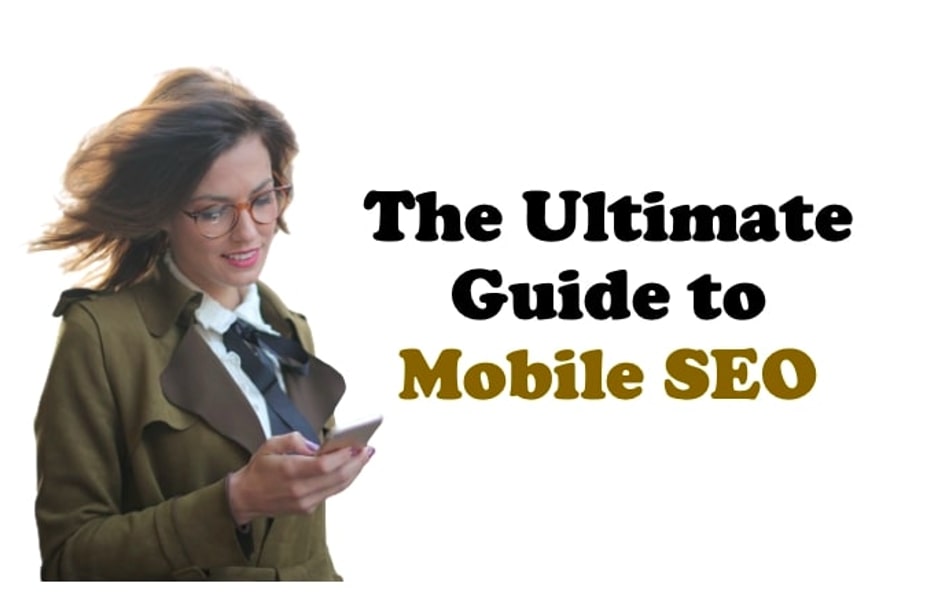Engaging Content is the key to success for any company or brand. It can help your audience learn about your product or service, increase conversions, and ultimately increase sales.
The more engaging your content is, the higher its chances of being shared. Content is the king and the queen of marketing. It can be anything from a blog post to an in-depth article.
Content marketing is not just about writing a blog post or an article to generate traffic. It’s also about creating engaging Content that will get people to share it with friends and family.
Quick Links
What is Engaging Content
Engaging Content is the type of content people are likelier to share. It can be a blog post, a video, or a podcast. In other words, engaging Content is the one that keeps readers interested and coming back for more. Again, it can be a story, an article, or a blog post.
Especially on “Your Money or Your Life” topics, the Content should be engaging and eye-catching because when you provide facts, figures, and graphs to fulfill EAT parameter, it will become a bit harder to read and difficult to understand. So it would be best to make it more interesting and simple using the methods below.
The best way to create engaging Content is by asking yourself these questions:
1) What do my customers care about?
2) What do my target audiences want?
3) What are my competitors doing?
4) How can I stand out from the crowd?
Engaging Content is a powerful tool that can help you to reach your audience in a meaningful way. It is not just about the Content itself but also about how you present it. Most importantly, the more relevant the Content is, the more engaging it will be.
If engaging content creation is an art, you need to be an artist to succeed in Search Engine Optimization and Blogging.
The following are some of the ways to create engaging Content:
1)- Know Your Audience
The first step to creating engaging content is knowing your audience. Know what they like, what they don’t, what they’re interested in, and how you can engage them with your Content.
Engaging Content is Content that your audience will enjoy reading. Therefore, it’s important to understand what your audience likes and dislikes to create engaging Content. One of the most important aspects of creating engaging content is understanding the psychology behind it.
In other words, to create engaging Content for your audience, you need to know your audience. This means you should know what they want, their motivations, and the type of Content they respond well to.
It also means that you need to understand the different types of Content they might like so you can produce them in a way that will keep them engaged.
2)- Start Brainstorming Ideas
After understanding your audience, it’s time to start brainstorming ideas on what types of Content might be interesting for them.
You can do this by looking at their preferences on social media and other platforms or asking questions about how they like certain topics or topics that are important to them. Once you have a list of ideas, it’s time to start creating your Content!
The brainstorming process is not just about generating ideas but also about understanding the readers and the topic you are writing about so that you know what they want to hear.
– Brainstorming with a partner
– Brainstorming alone
– Brainstorming using lists and mind maps
– Brainstorming using pictures and symbols
3)- Create Easy-to-Digest Content
Making your Content easy to digest is an important part of writing. It’s important because when you make your Content easy to digest, it will be more likely that your audience will be able to read through it quickly and understand what you are trying to say.
For the reader to understand what you’re trying to say, you need to use words they are familiar with and allow them time to process what they are reading.
Using unfamiliar words can cause the reader confusion and make them feel like they need help understanding the message you’re trying to convey.
We all know that Content is king. The key to creating engaging Content is to make it easy for readers to consume and understand.
4)- Create short, Sweet, and To-the-Point Content
“Content-length is not a factor of quality. It’s a factor of engagement.”
Engaging Content is the key to success in content marketing. Therefore, creating engaging Content that resonates with your audience is important by keeping it short, sweet, and to the point.
The key to creating engaging content is finding a way to tell your story that resonates with your audience. It’s all about listening first and then speaking:
- The average article in the New York Times is about 2,000 words long.
- The average article on the Huffington Post is about 1,000 words long.
- The average article on Inc.com is about 5,000 words long.
- The average blog post on Medium is about 3,500 words long.
An article’s length can indicate how engaging it will be for its audience – and not just by word count alone (although word count does have a lot to do with it.
Instead of giving long details of every term, point, or phrase, create a separate page for them by applying the content hub approach. Interlinking among pages and posts are also a positive metric in on-page SEO.
5)- Don't Make Your Content Too Wordy
When it comes to Content, you should think of it as a work of art. The important thing is to ensure that the Content is engaging and concise. You want your readers to feel like they are getting a piece of art, not just words on a page.
To create engaging Content, you need to keep your readers engaged. If you make your Content too wordy, it will take a lot of time for them to read it, and they might get bored.
Make sure that the first sentence of your Content is concise and engaging. Then, use the second sentence to elaborate on the first sentence.
6)- Create a Story-based Content
There are many ways to do this, but one of the most important is creating story-based Content. We need to have a clear story and ensure it is interesting.
The first step in creating a story is to create a protagonist and antagonist. The protagonist is the character your audience will sympathize with and root for, while the antagonist is the character they will want to see fail or succeed.
The second step in creating a story is identifying your protagonist’s main conflict or objective. Finally, the third step in creating a story is establishing what setting it takes place in and what kind of tone you want it to have.
The fourth step in creating a story is to introduce some complication into the situation so that it becomes more interesting for the reader. Finally, it would be best if you tied up all loose ends at the end of your story with an ending
The story-based Content is a new way of thinking about content marketing. It is a new approach that is designed to create engaging Content. The reasons for creating story-based Content are:
- To generate more leads that convert into customers
- To create high-quality, emotional, and engaging Content
- To increase the engagement of your audience
- To create a sense of community
7)- Add a Personal Touch
We all know that Content is king. It is one of the most important things you can do to grow your business online. And if you are looking for a way to create engaging Content, then you will need to learn how to use personalization in your writing.
Personalization is an effective way of engaging and entertaining readers by adding a personal touch to your writing. It can be as simple as including their name or an anecdote about them at the beginning of a blog post or email, or it can be more complex with a quiz for readers to answer before they read the rest of your post.
The key here is that the reader feels like they are getting something unique from you and that their reading has been tailored specifically for them.
It’s also important to do what is necessary with personalization because it can become annoying if done too often.
8)- Use Relatable Analogies
Analogies are a great way to create engaging Content. They can help you understand your audience better and see their thoughts. This article will teach you how to use analogies in your writing to create engaging Content that your audience will love.
Analogies help us understand people and events better and can also help us understand ideas, concepts, or problems. For example, when we have something we don’t quite grasp, an analogy might help us wrap our mind around it more easily.
There are many ways to create analogies to make them more relatable and understandable for your audience. The most common way is through comparison and contrast, commonly used throughout the article.
9)- Add Some Humor
Let me guide you on how to make engaging Content that is also humorous. It will help you understand the importance of humor in your Content, what types of humor work best, and how to create a humorous frame.
Humor is a powerful tool that can engage readers in different ways. But before using it effectively, you need to understand its power and purpose.
Humor should be used when your audience feels something or is struggling. Humor makes people feel less self-conscious about their situation and more willing to talk about it.
There are many different types of humor that you can use in your Content. Still, the most effective ones are usually ironic or satirical because they make people laugh at themselves rather than at them.
10)- Add a Suitable Picture
The main purpose of a picture is to add more visual appeal to the Content. It can help capture readers’ attention and make it easier for them to understand what is being written.
The pictures below are some examples of how pictures can be used in content writing:
- A picture of a person with a laptop on their lap while they are writing articles or books.
- A picture of someone sitting at their desk, typing on their keyboard while working on an article or book.
- An image represents the subject being written about, such as an image that shows the concept of “health.”
Using images in content marketing is a proven way to increase engagement and increase the chance of converting readers into customers.
Images can help create a visual representation, which can be very powerful in communicating the message.
They also break up the text, provide visual context, and help create brand personality.
Final Words
We all know that Content is king. It is what makes or breaks a website.
The content writing industry is quickly evolving into a more competitive space. The key to success in this field is to create engaging Content that will keep your audience engaged.
Creating engaging Content is a challenging task. First, you must think of the best way to engage your audience and make them feel something.
The best way to brainstorm engaging content ideas is by thinking about what your audience wants to read or hear.
To create engaging Content, you need to think about the words you use and how you use them. Then, it will positively impact the engagement metric, considered a core KPI in ranking high on the Google Search Engine Results Page.
In addition, you want your writing style to be conversational so that it feels like a conversation between the reader and the writer.
If you are struggling with how to create engaging content, here are some tips for you:
- Have an interesting story or idea in mind.
- Make sure that your writing style is concise sentences.
- Keep things simple and avoid using too many words or complicated terms.
People are getting increasingly used to consuming content on their phones and tablets, which means that many people are looking for engaging Content with personality.
This makes it difficult for businesses to keep up with the times and ensure they have engaging Content for their audience. However, you can be an expert in writing engaging Content yourself. AI can help you out by generating engaging stories on your behalf.
Sharing is Caring

























